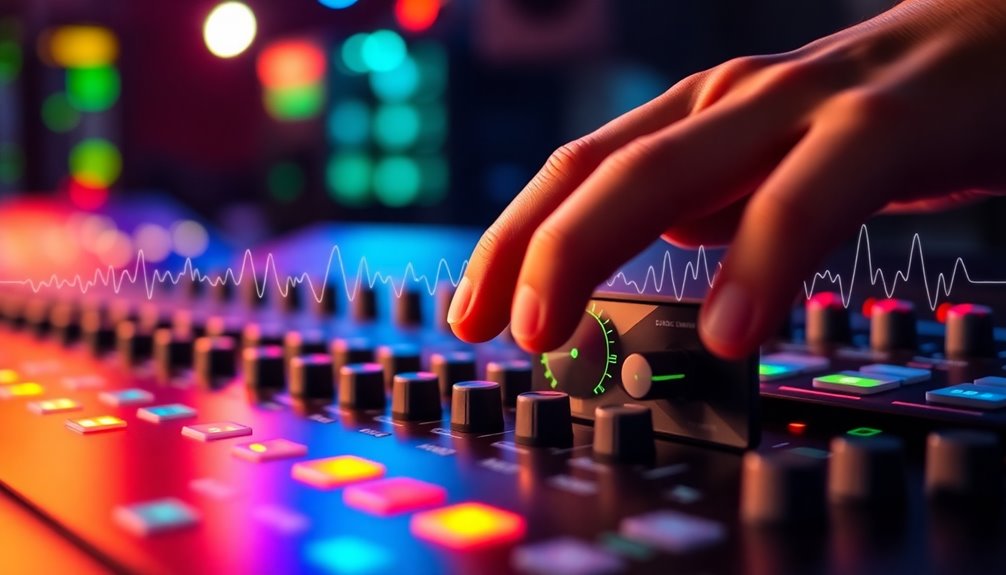Sidechain compression is a mixing technique that allows one audio signal to control the volume of another, creating space and enhancing clarity in your music. You typically route a drum beat, like a kick, into a compressor's sidechain input. This setup helps you achieve that signature pumping effect, especially in EDM and pop tracks. It's great for ducking background sounds during announcements and keeping bass lines from clashing with other elements. When you tweak your compressor's settings, you can customize the impact. Stick with us to discover ways to leverage this technique for a more polished sound.
Key Takeaways
- Sidechain compression is an audio mixing technique that uses one audio signal to control the dynamics of another signal.
- It creates space in a mix, commonly producing a pumping effect in electronic music and preventing frequency clashes.
- The technique enhances clarity and separation by dynamically reducing the volume of one channel in response to another.
- Key parameters to adjust in sidechain compression include threshold, attack, and release settings for desired effects.
- It is widely used in genres like EDM and pop for its ability to improve mixing efficiency and maintain bass punch.
Sidechain Compression Overview
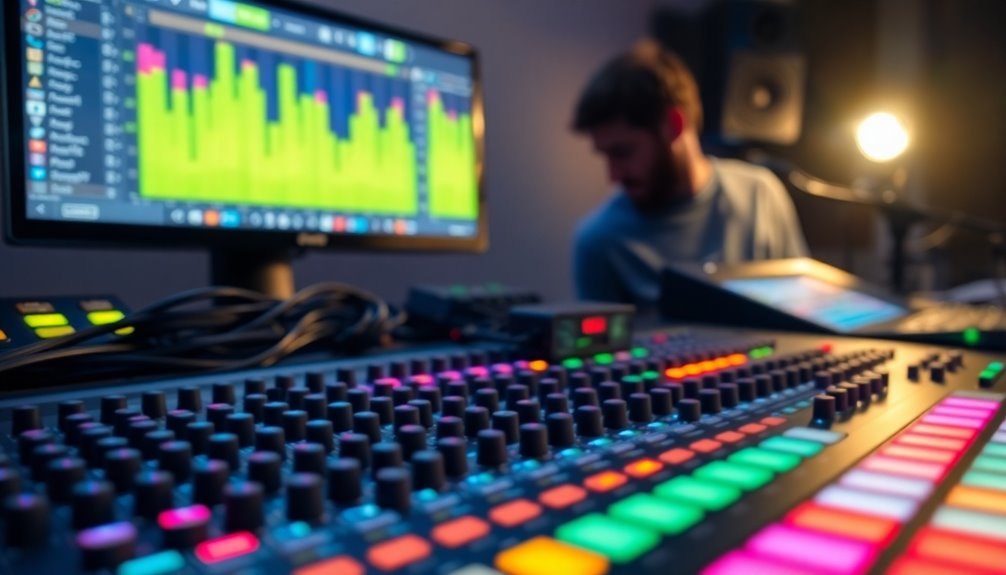
When you dive into the world of audio production, you'll quickly discover sidechain compression as a powerful tool that shapes your mix. Its primary purpose is to create space by reducing the volume of one channel, allowing other elements to shine through.
You'll often hear this technique in electronic music, where it produces that signature pumping effect. Sidechain compression also plays a vital role in ducking, lowering background music during announcements in public address systems. Sidechain compression is particularly effective for managing kick drums and bass lines, preventing frequency clashes. By adjusting compressor settings based on the trigger channel, you can effectively balance vocals and synths, ensuring a polished and cohesive sound throughout your track.
Defining Sidechain Compression Techniques
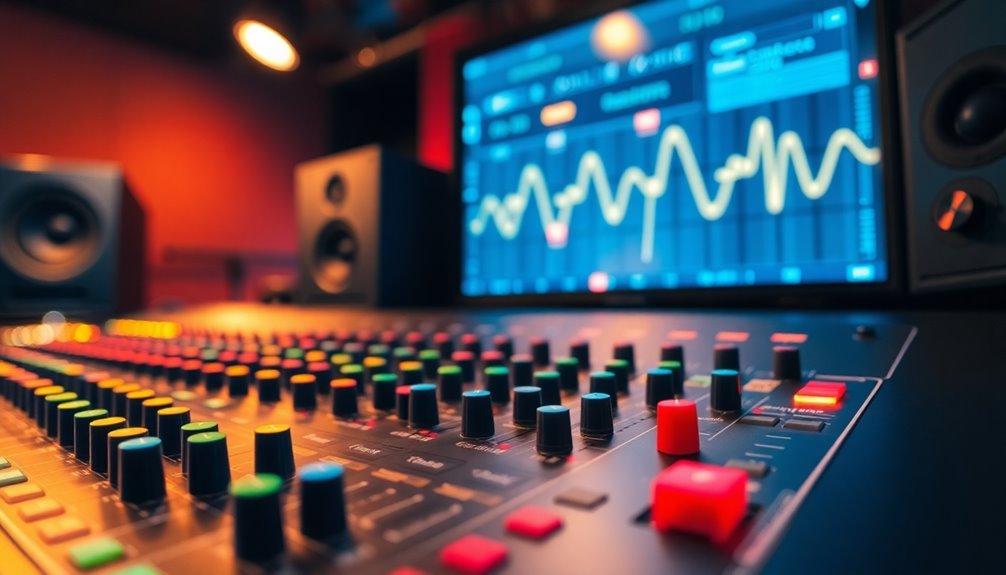
Sidechain compression techniques are vital for sculpting your audio mix. Start by choosing a compressor plugin that has a sidechain input feature, like FabFilter Pro-C or Waves RCompressor.
Route your trigger channel, such as a kick drum, into the compressor's sidechain input. Adjust the threshold, attack, and release settings to shape the compression effect. For instance, sidechain the bass to the kick to create space in the mix, or use multiband compression to target specific frequencies. This technique is particularly useful for addressing frequency masking that diminishes kick clarity.
You can even explore LFO sidechain for rhythmic effects in dance tracks. Fine-tune your settings to ensure the gain reduction returns to zero between pumps, keeping your mix dynamic and engaging without sounding overly compressed.
Signal-Triggered Volume Reduction
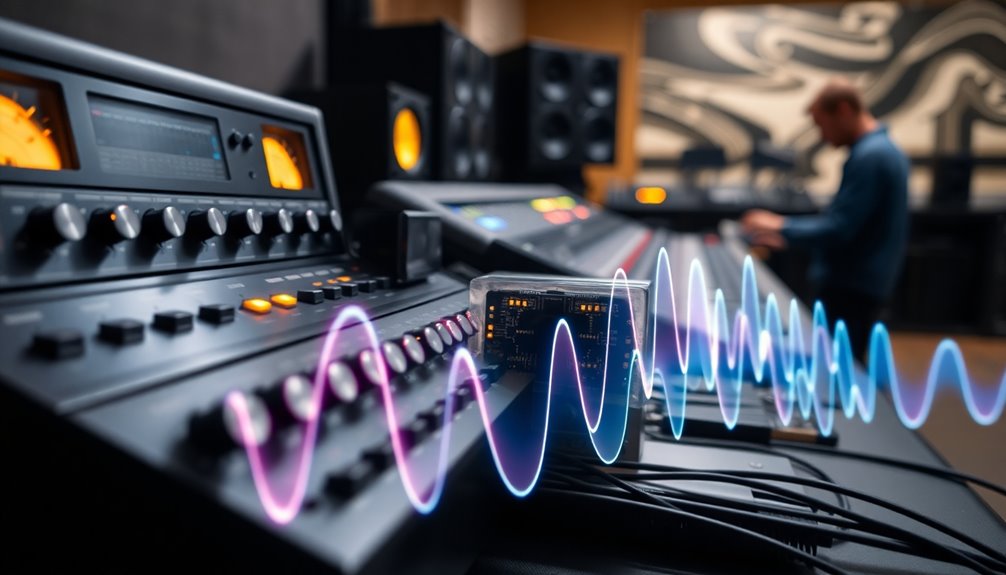
Understanding signal-triggered volume reduction is essential for achieving clarity and balance in your mix. This process involves using sidechain compression to lower the volume of one audio track based on the level of another.
You route your primary signal to the key input of a compressor applied to the secondary track. The threshold determines when compression kicks in, while the ratio dictates how much reduction occurs. Compression lowers overall volume while making audio signals more uniform, which enhances the effectiveness of sidechain techniques.
Control parameters like attack and release time allow you to fine-tune the response, affecting how quickly and smoothly the secondary track reacts. This technique effectively prevents masking between instruments, creating space and enhancing the overall clarity of your sound.
Whether for ducking or creating a pumping effect, mastering this method is key.
Pros and Cons

Using sidechain compression can significantly enhance your mix, but it's important to weigh its advantages and disadvantages.
On the pro side, it brings clarity by creating space between elements and improving separation, especially between kick and bass. You'll find it can also add creative effects, like rhythmic pumping, which is great for genres like EDM. Additionally, it helps maintain bass punch while highlighting the kick's attack, ensuring a balanced mix.
Plus, it boosts mixing efficiency by automating volume control and allowing for versatile applications across various instruments.
However, be cautious of complexity; it can confuse newcomers and requires a solid grasp of compression principles.
Over-compression can lead to an unnatural sound, and frequency conflicts might arise if not set up properly.
Ultimately, understanding these pros and cons is crucial for effective use.
Sidechain vs. Traditional Compression
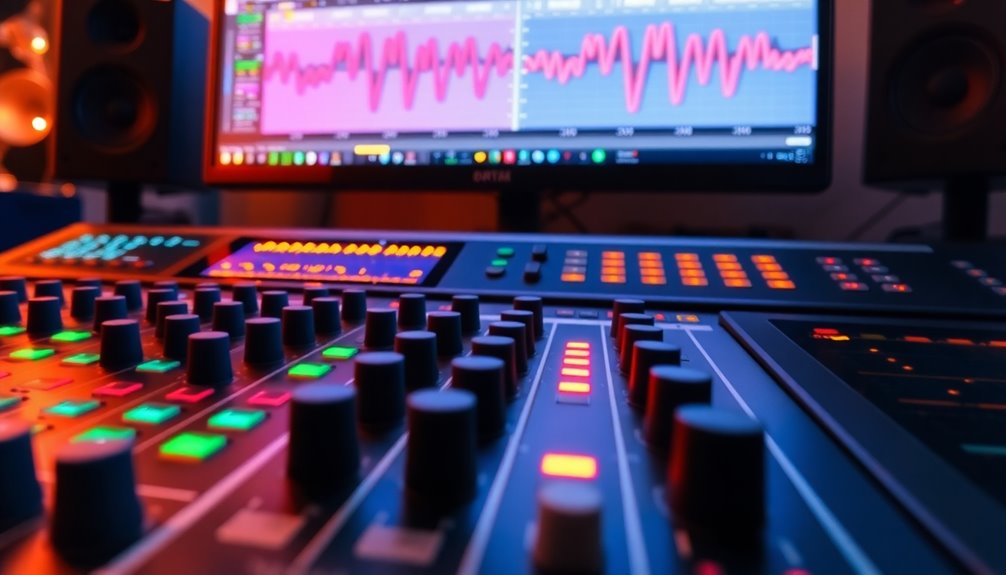
While both sidechain and traditional compression serve the purpose of controlling dynamics in a mix, they operate in fundamentally different ways.
Traditional compression listens to the volume of the main channel, reducing its level to maintain a consistent sound. It's great for smoothing out peaks in individual tracks like vocals or guitars.
In contrast, sidechain compression reacts to a separate trigger channel, like a kick drum, lowering the volume of another channel, such as bass, when the kick hits. This interaction creates space and can produce a "pumping" effect, adding a dynamic layer to your mix. This technique allows for greater clarity in a mix by reducing frequency masking during the kick drum and bass interaction.
Essentially, traditional compression focuses on isolation, while sidechain compression emphasizes interaction between channels for a balanced sound.
Latency and Timing Issues
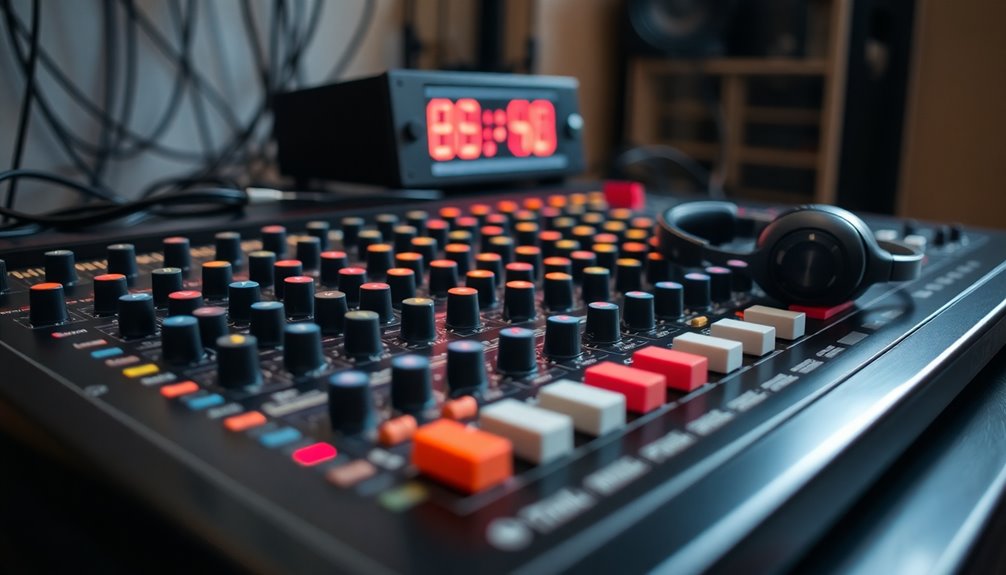
Latency can significantly disrupt the timing of sidechain compression, affecting how well it interacts with other elements in your mix.
When you use latency-inducing plugins like delays or reverbs, your sidechain sync can suffer. If these plugins sit before your compressor, the timing issues can worsen. Additionally, high latency plugins placed incorrectly in your chain can exacerbate these problems.
To keep your timing accurate, create a dedicated trigger track without latency-inducing effects. Assigning your side-chain bus to a new Master Fader and bypassing the same plugin can also help.
Additionally, enabling proper Delay Compensation (ADC) is crucial. Remember, time-based plugins like LFO Tool and Tremolo can fall out of sync due to latency, complicating your mix further.
Stay vigilant with your plugin chain to ensure tight timing throughout your production.
Real-Time Audio Processing Advancements
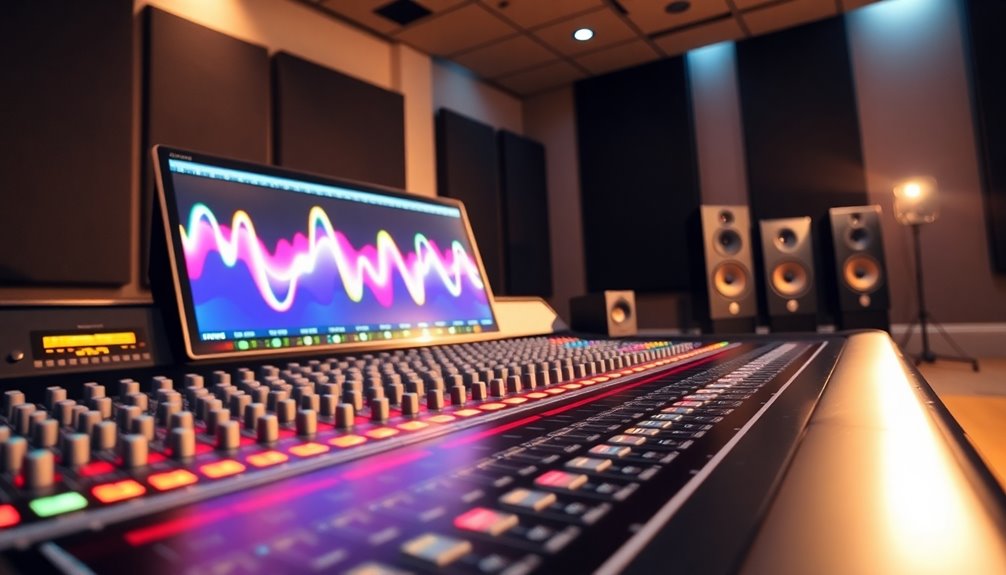
As technology evolves, real-time audio processing advancements are reshaping the way you create and interact with sound.
With AI-enhanced noise cancellation, you can enjoy clearer audio in dynamic environments, making conversations and multimedia content more enjoyable. Additionally, the use of predictive analytics in audio processing can help optimize sound quality by anticipating and adjusting to varying acoustic conditions.
Real-time speech recognition technologies, like Azure Speech Services, provide almost human-level accuracy for seamless transcription, enhancing communication during calls or video uploads. Recent advancements in speaker diarization technology have also improved the accuracy of identifying different speakers in real-time conversations.
Moreover, AI is revolutionizing audio mastering, allowing you to access affordable services that refine your sound effortlessly.
Advanced audio processing techniques are also emerging, improving efficiency in editing and creating content while enhancing virtual experiences. These innovations streamline your workflow and elevate your audio quality, making your projects more professional and engaging.
Use a Clear Trigger Source
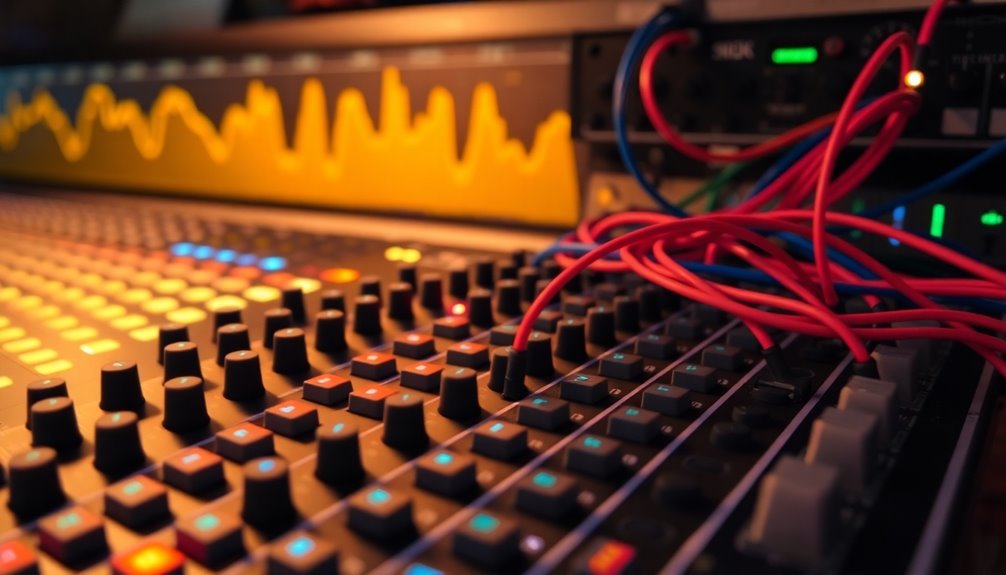
What's the key to achieving a punchy mix when using sidechain compression? It's all about choosing a clear trigger source. The kick drum is a popular choice, especially for sidechaining bass, as its unique waveform can create a harmonious blend. Just remember that a longer release time might be necessary to accommodate the kick's sustained signal. On the other hand, sharp trigger sounds like rimshots give you a more defined effect, requiring shorter release times for that consistent compression pattern. Don't shy away from using rhythmic elements like snares or hi-hats, either—they can enhance the overall groove. Additionally, dynamic processing techniques can be creatively applied to achieve unique sonic profiles in your mix. Lastly, experimenting with external audio sources can offer flexibility, letting you fine-tune the sidechain effect to fit your mix perfectly.
Frequently Asked Questions
Can Sidechain Compression Be Used in Live Performances?
Yes, you can definitely use sidechain compression in live performances. It helps you maintain a balanced mix by controlling levels between instruments, like bass and kick drum.
You'll want to ensure your setup is technically compatible, with low latency for real-time adjustments. By configuring the compressor correctly, you can enhance clarity and separation in your sound.
Just remember to practice and monitor your settings to avoid any unwanted artifacts during your performance.
What Types of Audio Sources Can Trigger Sidechain Compression?
Think of sidechain compression as a dance where certain audio sources lead the way.
You can use kick drums to control bass lines, ensuring they don't clash. Vocals can trigger compression on effects, allowing them to shine through the mix.
Instrumental tracks, like guitars and synths, can also play a part, responding to dynamic changes.
How Does Sidechain Compression Affect the Overall Mix?
Sidechain compression significantly impacts your mix by creating space and clarity among competing sounds. It reduces clashes between instruments, ensuring a balanced level without one overpowering another.
This technique enhances the rhythmic groove, allowing elements to dynamically respond to each other. You'll notice improved clarity and cohesion, making each sound distinct while maintaining a clean overall sound.
Is Sidechain Compression Suitable for All Music Genres?
Sidechain compression isn't suitable for all music genres. For electronic music, it creates that iconic pumping effect and balances elements like kick and bass.
In hip-hop, it emphasizes rhythms, making sounds bow to the kick. However, overusing it can lead to an unnatural sound.
Genres that require a more organic feel may not benefit from it as much. Always consider the style and desired outcome before applying this technique to your mix.
What Plugins Are Popular for Sidechain Compression?
When it comes to popular plugins for sidechain compression, you've got some great options.
Logic Pro X and Ableton Live offer solid built-in compressors with intuitive controls.
For premium choices, consider FabFilter Pro-C 2 or ShaperBox 2 for advanced features.
If you're looking for free options, check out TDR Molotok or ReaComp.
Each plugin has unique strengths that can help you achieve that desired pumping effect in your mix.
Conclusion
In the vibrant world of music production, sidechain compression acts like a dance partner, guiding sounds to move gracefully together. By using a clear trigger source, you can create that pulsating heartbeat in your mix, making everything feel alive. While it has its pros and cons, the magic it brings can elevate your tracks to new heights. So, embrace this technique, and watch your music come alive, flowing like a river through a lush, green valley.
